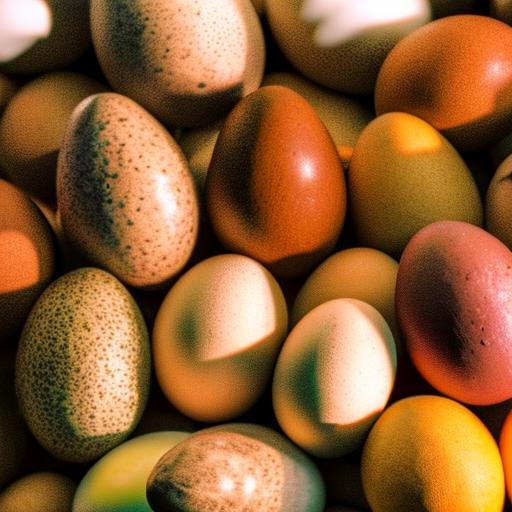Chicken breeds are a critical factor in poultry farming, influencing productivity, adaptability, and overall operational success. Breeds are specifically developed for egg production, meat production, or dual-purpose use, each possessing unique traits suited to specific farming requirements. Selecting an appropriate breed is vital for optimizing poultry farm potential and ensuring a sustainable, profitable enterprise.
The choice of chicken breed impacts various aspects of poultry farming, including feed efficiency, growth rate, egg size and production, disease resistance, and climate adaptability. Some breeds excel in cold climates, while others are better suited to hot, humid environments. Certain breeds exhibit docile behavior ideal for free-range farming, whereas others display more aggressive tendencies better suited to confinement.
A thorough understanding of different chicken breeds’ characteristics and requirements is essential for making informed decisions that significantly impact the success of a poultry farming operation.
Table of Contents
- 1 A Visual Guide to Different Chicken Breeds
- 2 The Most Popular Chicken Breeds for Egg Production
- 3 The Most Popular Chicken Breeds for Meat Production
- 4 Rare and Exotic Chicken Breeds: A Look at Some Lesser-Known Varieties
- 5 How to Choose the Right Chicken Breed for Your Farm or Backyard
- 6 Tips for Taking Beautiful Pictures of Your Chickens
- 7 FAQs
- 7.1 What are some common chicken breeds?
- 7.2 What are the different types of chickens?
- 7.3 What are some characteristics of different chicken breeds?
- 7.4 Where can I find pictures of different chicken breeds?
- 7.5 Are there specific considerations for raising different chicken breeds?
- 7.6 What are some popular chicken breeds for backyard farming?
Key Takeaways
- Chicken breeds play a crucial role in poultry farming, impacting egg and meat production, as well as overall farm management.
- Different chicken breeds have distinct physical characteristics, such as size, color, and feather patterns, making them visually unique.
- Popular chicken breeds for egg production include the Rhode Island Red, Leghorn, and Australorp, known for their high egg-laying capabilities.
- For meat production, breeds like the Cornish Cross, Plymouth Rock, and Orpington are favored for their fast growth and high meat yield.
- Rare and exotic chicken breeds, such as the Silkie, Ayam Cemani, and Polish, offer unique and visually striking options for poultry enthusiasts.
A Visual Guide to Different Chicken Breeds
Chicken breeds are incredibly diverse, with hundreds of varieties found around the world. Each breed boasts its own distinct physical characteristics, color patterns, and behavioral traits.
Popular Breeds and Characteristics
Some of the most well-known breeds include the Rhode Island Red, Plymouth Rock, Leghorn, Wyandotte, Orpington, and Sussex. These breeds come in a range of colors, such as white, black, red, buff, and silver, and can have single combs, rose combs, or pea combs.
Size and Purpose
In terms of size, there are bantam breeds, which are smaller in stature, and standard breeds, which are larger and more robust. Bantam breeds are often kept for ornamental purposes or as pets, while standard breeds are typically raised for egg or meat production.
Personality Traits and Breed Identification
Each breed also has its own unique personality traits, with some being more docile and friendly, while others are more independent and flighty. Understanding the visual differences between different chicken breeds is important for breed identification and selection.
The Most Popular Chicken Breeds for Egg Production

When it comes to egg production, some chicken breeds stand out for their exceptional laying abilities. The Leghorn is one of the most popular egg-laying breeds, known for its prolific production of large white eggs. Other popular egg-laying breeds include the Rhode Island Red, Plymouth Rock, Sussex, and Orpington.
These breeds are known for their consistent egg production, good feed conversion rates, and adaptability to various climates. Egg-laying breeds are typically selected for their ability to produce a high volume of eggs throughout the year. Factors such as egg size, shell quality, and color may also influence the choice of breed for egg production.
Additionally, some breeds are known for their early maturity and ability to start laying eggs at a younger age. Selecting the right egg-laying breed is essential for maximizing egg production and ensuring a steady supply of high-quality eggs for commercial or backyard use.
The Most Popular Chicken Breeds for Meat Production
For meat production, certain chicken breeds are specifically bred for their fast growth rate, efficient feed conversion, and high meat yield. The Cornish Cross is one of the most popular meat-producing breeds, known for its rapid growth and large breast muscles. Other popular meat breeds include the Plymouth Rock, New Hampshire, Sussex, and Orpington.
These breeds are selected for their ability to reach market weight in a relatively short period while producing tender and flavorful meat. Meat-producing breeds are typically larger in size and have a more muscular build compared to egg-laying breeds. They are also bred to have a higher meat-to-bone ratio and are known for their efficient conversion of feed into meat.
Selecting the right meat-producing breed is essential for maximizing meat yield and ensuring a profitable enterprise. Factors such as growth rate, feed efficiency, carcass quality, and adaptability to different management systems should be considered when choosing a breed for meat production.
Rare and Exotic Chicken Breeds: A Look at Some Lesser-Known Varieties
In addition to the popular chicken breeds commonly found in commercial poultry farming, there are also rare and exotic breeds that are prized for their unique appearance and historical significance. Some lesser-known varieties include the Ayam Cemani, a breed from Indonesia known for its entirely black feathers, skin, and even internal organs; the Silkie, a breed with fluffy plumage and black skin; the Frizzle, which has curled feathers; and the Polish, known for its distinctive crest of feathers on its head. These rare and exotic breeds are often kept for ornamental purposes or as show birds due to their striking appearance and unusual characteristics.
While they may not be as prolific in egg or meat production as some of the more common breeds, they are valued for their beauty and historical significance. Additionally, preserving rare and exotic chicken breeds is important for maintaining genetic diversity within poultry populations and safeguarding valuable traits that may be beneficial for future breeding programs.
How to Choose the Right Chicken Breed for Your Farm or Backyard

Defining Your Purpose
The primary purpose of raising chickens is a critical factor in determining the most suitable breed. Are you looking to produce eggs, raise chickens for meat, or perhaps a combination of both? Identifying your purpose will help narrow down the selection to breeds that excel in your desired area.
Environmental and Spatial Considerations
Climate adaptability, space availability, and temperament are essential factors to consider when choosing a chicken breed. For instance, if you live in a cold climate, breeds like the Plymouth Rock or Wyandotte are ideal due to their cold-hardiness. In contrast, if space is limited, bantam breeds such as the Silkie or Dutch Bantam may be more suitable due to their smaller size.
Resource Availability and Local Regulations
It’s vital to consider the availability of resources such as feed and water, as well as local regulations regarding poultry ownership. Some areas may have restrictions on certain breeds or require permits for keeping chickens. By taking these factors into account, you can create a successful and enjoyable experience raising chickens.
Tips for Taking Beautiful Pictures of Your Chickens
Chickens can make charming subjects for photography with their vibrant plumage and quirky behaviors. Whether capturing images for personal enjoyment or promotional purposes such as advertising eggs or chicks for sale, there are several tips to keep in mind when photographing chickens. Firstly, it’s important to ensure that the chickens are comfortable and at ease during the photoshoot.
This can be achieved by familiarizing them with the camera equipment beforehand and providing treats to encourage them to stay still. Natural lighting is also key to capturing beautiful images of chickens—early morning or late afternoon light tends to be softer and more flattering compared to harsh midday sun. When composing the shot, consider using interesting angles to highlight the unique features of each chicken breed.
Close-up shots can showcase intricate feather patterns or vibrant colors while wide-angle shots can capture the entire flock in their natural environment. Patience is also essential when photographing chickens as they can be unpredictable subjects—be prepared to take multiple shots to capture that perfect moment. In conclusion, understanding the importance of chicken breeds in poultry farming is essential for making informed decisions that will ultimately impact the success of a poultry farming operation.
By familiarizing oneself with different chicken breeds and their specific characteristics for egg production or meat production purposes, it’s possible to select the right breed that aligns with specific farming needs. Additionally, taking beautiful pictures of chickens can be an enjoyable way to capture their unique beauty and share it with others.
If you’re interested in learning more about different chicken breeds and seeing pictures of them, check out this article on poultrywizard.com. It provides valuable information on various chicken breeds and their characteristics, as well as tips on how to care for them. Whether you’re a beginner or an experienced chicken owner, this article is a great resource for anyone looking to expand their knowledge of chicken breeds.
FAQs
What are some common chicken breeds?
Some common chicken breeds include the Rhode Island Red, Leghorn, Plymouth Rock, and Wyandotte.
What are the different types of chickens?
Chickens can be categorized into different types based on their purpose, such as egg-laying breeds, meat breeds, and dual-purpose breeds.
What are some characteristics of different chicken breeds?
Different chicken breeds have varying characteristics such as size, color, egg production, temperament, and adaptability to different climates.
Where can I find pictures of different chicken breeds?
You can find pictures of different chicken breeds on various websites, including poultry breed association websites, farm supply websites, and animal photography websites.
Are there specific considerations for raising different chicken breeds?
Yes, different chicken breeds may have specific requirements for housing, feeding, and care based on their size, temperament, and purpose. It’s important to research and understand the specific needs of the breed you are raising.
What are some popular chicken breeds for backyard farming?
Popular chicken breeds for backyard farming include the Australorp, Orpington, Sussex, and Silkie, as they are known for their friendly temperament and good egg production.

Meet Walter, the feathered-friend fanatic of Florida! Nestled in the sunshine state, Walter struts through life with his feathered companions, clucking his way to happiness. With a coop that’s fancier than a five-star hotel, he’s the Don Juan of the chicken world. When he’s not teaching his hens to do the cha-cha, you’ll find him in a heated debate with his prized rooster, Sir Clucks-a-Lot. Walter’s poultry passion is no yolk; he’s the sunny-side-up guy you never knew you needed in your flock of friends!

Meet Walter, the feathered-friend fanatic of Florida! Nestled in the sunshine state, Walter struts through life with his feathered companions, clucking his way to happiness. With a coop that’s fancier than a five-star hotel, he’s the Don Juan of the chicken world. When he’s not teaching his hens to do the cha-cha, you’ll find him in a heated debate with his prized rooster, Sir Clucks-a-Lot. Walter’s poultry passion is no yolk; he’s the sunny-side-up guy you never knew you needed in your flock of friends!







